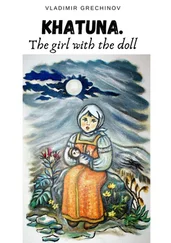“I know what you mean.”
“My impression was that the man was all bluff. He wasn’t even particularly bright as a financier. In fact, I thought he was damned ignorant about certain subjects although he had some really sharp young warriors for advisers. Above all, I really didn’t care for him personally.”
“So?”
“A few years ago I went down to Poland on some other matter. Our group had dinner with some investors in Lódz, and I found myself at the same table as the mayor. We talked about the difficulty of getting Poland’s economy on its feet and all that, and somehow or other I mentioned the Minos project. The mayor looked quite astonished for a moment – as if he had never heard of Minos. He told me it was some crummy little business and nothing ever came of it. He laughed and said – I’m quoting word for word – that if that was the best our investors could manage, then Sweden wasn’t long for this life. Are you following me?”
“That mayor of Lódz is obviously a sharp fellow, but go on.”
“The next day I had a meeting in the morning, but the rest of my day was free. For the hell of it I drove out to look at the shut-down Minos factory in a small town outside of Lódz. The giant Minos factory was a ram-shackle structure. A corrugated iron storage building that the Red Army had built in the fifties. I found a watchman on the property who could speak a little German and discovered that one of his cousins had worked at Minos and we went over to his house nearby. The watchman interpreted. Are you interested in hearing what he had to say?”
“I can hardly wait.”
“Minos opened in the autumn of 1992. There were at most fifteen employees, the majority of them old women. Their pay was around one hundred fifty kronor a month. At first there were no machines, so the workforce spent their time cleaning up the place. In early October three cardboard box machines arrived from Portugal. They were old and completely obsolete. The scrap value couldn’t have been more than a few thousand kronor. The machines did work, but they kept breaking down. Naturally there were no spare parts, so Minos suffered endless stoppages.”
“This is starting to sound like a story,” Blomkvist said. “What did they make at Minos?”
“Throughout 1992 and half of 1993 they produced simple cardboard boxes for washing powders and egg cartons and the like. Then they started making paper bags. But the factory could never get enough raw materials, so there was never a question of much volume of production.”
“This doesn’t sound like a gigantic investment.”
“I ran the numbers. The total rent must have been around 15,000 kronor for two years. Wages may have amounted to 150,000 SEK at most – and I’m being generous here. Cost of machines and cost of freight… a van to deliver the egg cartons… I’m guessing 250,000. Add fees for permits, a little travelling back and forth – apparently one person from Sweden did visit the site a few times. It looks as though the whole operation ran for under two million. One day in the summer of 1993 the foreman came down to the factory and said it was shut down, and a while later a Hungarian lorry appeared and carried off the machinery. Bye-bye, Minos.”
In the course of the trial Blomkvist had often thought of that Midsummer Eve. For large parts of the evening the tone of the conversation made it feel as if they were back at school, having a friendly argument. As teenagers they had shared the burdens common to that stage in life. As grown-ups they were effectively strangers, by now quite different sorts of people. During their talk Blomkvist had thought that he really could not recall what it was that had made them such friends at school. He remembered Lindberg as a reserved boy, incredibly shy with girls. As an adult he was a successful… well, climber in the banking world.
He rarely got drunk, but that chance meeting had transformed a disastrous sailing trip into a pleasant evening. And because the conversation had so much an echo of a schoolboy tone, he did not at first take Lindberg’s story about Wennerström seriously. Gradually his professional instincts were aroused. Eventually he was listening attentively, and the logical objections surfaced.
“Wait a second,” he said. “Wennerström is a top name among market speculators. He’s made himself a billion, has he not?”
“The Wennerström Group is sitting on somewhere close to two hundred billion. You’re going to ask why a billionaire should go to the trouble of swindling a trifling fifty million.”
“Well, put it this way: why would he risk his own and his company’s good name on such a blatant swindle?”
“It wasn’t so obviously a swindle given that the AIA board, the bankers, the government, and Parliament’s auditors all approved Wennerström’s accounting without a single dissenting vote.”
“It’s still a ridiculously small sum for so vast a risk.”
“Certainly. But just think: the Wennerström Group is an investment company that deals with property, securities, options, foreign exchange… you name it. Wennerström contacted AIA in 1992 just as the bottom was about to drop out of the market. Do you remember the autumn of 1992?”
“Do I? I had a variable-rate mortgage on my apartment when the interest rate shot up five hundred percent in October. I was stuck with nineteen percent interest for a year.”
“Those were indeed the days,” Lindberg said. “I lost a bundle that year myself. And Hans-Erik Wennerström – like every other player in the market – was wrestling with the same problem. The company had billions tied up in paper of various types, but not so much cash. All of a sudden they could no longer borrow any amount they liked. The usual thing in such a situation is to unload a few properties and lick your wounds, but in 1992 nobody wanted to buy real estate.”
“Cash-flow problems.”
“Exactly. And Wennerström wasn’t the only one. Every businessman…”
“Don’t say businessman. Call them what you like, but calling them businessmen is an insult to a serious profession.”
“All right, every speculator had cash-flow problems. Look at it this way: Wennerström got sixty million kronor. He paid back six mil, but only after three years. The real cost of Minos didn’t come to more than two million. The interest alone on sixty million for three years, that’s quite a bit. Depending on how he invested the money, he might have doubled the AIA money, or maybe grown it ten times over. Then we’re no longer talking about cat shit. Skål, by the way.”
CHAPTER 2
Friday, December 20
Dragan Armansky was born in Croatia fifty-six years ago. His father was an Armenian Jew from Belorussia. His mother was a Bosnian Muslim of Greek extraction. She had taken charge of his upbringing and his education, which meant that as an adult he was lumped together with that large, heterogeneous group defined by the media as Muslims. The Swedish immigration authorities had registered him, strangely enough, as a Serb. His passport confirmed that he was a Swedish citizen, and his passport photograph showed a squarish face, a strong jaw, five-o’clock shadow, and greying temples. He was often referred to as “The Arab,” although he did not have a drop of Arab blood.
He looked a little like the stereotypical local boss in an American gangster movie, but in fact he was a talented financial director who had begun his career as a junior accountant at Milton Security in the early seventies. Three decades later he had advanced to CEO and COO of the company.
He had become fascinated with the security business. It was like war games – to identify threats, develop counter – strategies, and all the time stay one step ahead of the industrial spies, blackmailers and thieves. It began for him when he discovered how the swindling of a client had been accomplished through creative bookkeeping. He was able to prove who, from a group of a dozen people, was behind it. He had been promoted and played a key role in the firm’s development and was an expert in financial fraud. Fifteen years later he became CEO. He had transformed Milton Security into one of Sweden’s most competent and trusted security firms.
Читать дальше












